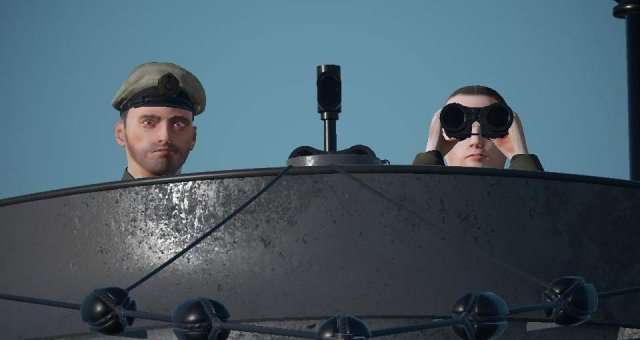
Finding the distance and speed of a convoy can be tricky, especially in the night when seeing the actual height of the masts can be difficult. But all you need to find the actual course, speed and distance of the convoy is some time, some precision measuring and the map.
What This Method Depends On
Basically all that’s needed is precise bearings to the convoy at precise moments. The tricky part is knowing what to take bearings for. First, it should always be the same ship and always the same part of the ship. Aiming at the funnel has proven to be quite sensible, since that’s the part that you can identify well even at great distances due to the smoke. It has to be the same ship all the time or else you’re getting wrong data.
Of course this method also depends on a convoy that has not been spooked and is traveling at a constant speed in a constant direction.
Preparation
Turn your protractor so its 0 matches the current heading. This is important, since your commander will only be able to give you the bearing, not the heading, of the target, the information you get from him will be relative to your own vessel. In other words, if you’re heading 180 and he sees a target at bearing 340, it means that the target is at heading 160 to the sub. If the protractor is set up correctly (i.e. pointing at the direction your sub is heading to), the bearing you get from your commander correspond to the ones on the protractor. Use them to draw the lines.
Also, now you should decide what intervals to take bearings. The longer the intervals, the more time you have to do your work and the more precise it will (probably) be, but also the longer it will take until you find speed, range and direction of the convoy. You will need at the very least 4 bearings (and in reality usually closer to 6-7) to determine these things, so using intervals of 7 minutes basically means that it takes half an hour to find the course.
For your first attempt I’d recommend going with 7 or even 10 minutes just to make sure you have ample time to do all calculations. If you’re certain of what you do, you can cut the time shorter, but I would recommend not going under 4 minutes, the results get really bad if you go under 4 minutes.
First and Second Bearing
Once your commander spotted the convoy, it’s on. Ask him for a bearing, put down a timed dot on the map so you know when you took it (for this demonstration I didn’t, sorry, I’m a lazy person and didn’t want to wait 25 minutes around to take screenshots, but it’s something I definitely do in a “real” setting).
From the dot you made, draw a line in the direction your commander told you (note that he gave you a bearing, use the information from the protractor to draw the line!). Then wait for the amount of time you decided on.
If there are any course changes, adjust your protractor accordingly to reflect the new course.
When the time has passed, put down a new timed dot at the current position and ask for a new bearing. Again, draw the line in the direction given to you by your commander.
Third Bearing
Wait again for the time you decided on and repeat the process, only this time you MUST change the course if you haven’t already. Because with this third bearing, we have everything to predict where we will get the next bearing if we don’t change the course. Preferably you change course AND speed, the more the better. Usually, my commander uses this to turn towards the convoy and slow down to estimate the speed himself so he can compare his estimate with my calculations, but anything will do as long as you change the course.
Note that any prior course changes don’t invalidate the sightings (quite the opposite, the more course changes, usually, the better).
So we take this bearing and change course.
You will notice that the three lines you drew create a triangle. Put down a marker on each of the corners.
Predicting the Fourth Bearing
Now it’s time to play let’s pretend. Let’s imagine for a moment that the convoy is actually traveling right along the first bearing. That’s quite possible, if it was we would have seen it the second time where the first and second bearing intersect, and the third time where the first and third bearing intersect. So if that convoy was traveling right along the first sighting, where would we see it the fourth time? Now, since we know the convoy is traveling at a constant heading and speed, it would travel further along the line that the first bearing gave us, and it would travel again the same distance it did between the second and third sighting.
So what we do now is measure the distance of the points where second and third bearing intersect with the first, and move along the first bearing out from where the third intersects it.
In this image, the topmost line is the first sighting. The intersection in the lower right corner is where the second sighting crosses it.
This is our first plotting point for the fourth (hypothetical) sighting.
Now let’s imagine that the third sighting was the course of the convoy. We’d have seen it the first time where the first bearing intersects with it. We’d have seen it the second time where the second bearing intersects. The third time, we would have seen it the same distance further down along the third sighting. And the fourth time, we’d see it yet another time that distance down the third sighting.
In other words, we measure the distance where first and second bearing intersect the third, double that value and move that further down along the third sighting.
Now we have two points to plot with. Measure the angle between those two points
And draw a line at that angle through the two points towards your current position.
This is how we would see the convoy if we don’t change direction. This is why we have to change course no later than after the third sighting.
Fourth Bearing and Target Distance
After yet another period of waiting, we will hopefully get a bearing that intersects with the one that we predicted.
The point where the fourth bearing intersects with our constructed on is the current position of the ship we’re aiming at. In other words, we now know the distance to the convoy, just measure the distance from the point the bearing was taken to the point of intersection.
From Distance to Course
Now that we have the distance we can find the course. What we know is that the convoy travels at constant speed and direction, in other words, the points at which the course of the convoy intersects with our sightings have to be at the same distance from each other.
Finding those points is fairly straight forward. Draw a circle with the center at some point on the third bearing that goes through the position we just determined. It doesn’t matter where on the third bearing you draw it, but in general, putting it fairly perpendicular to the position is a good idea.
Draw a line through the circle that touches the target position and the center of the circle so you find the exact other side of the circle. Mark it with a x.
Draw a line through that new point that runs parallel to the third bearing (i.e. look what angle the third bearing was and draw a line at the same angle) that intersects with the second bearing.
Draw a line from this point to the position of the target. You now have the course of the target convoy.
From Course to Speed
Figuring out speed is fairly trivial. Hit Q to show time needed to travel instead of speed. Now measure the distance between two bearings along the course of the convoy (better, measure as far apart as you can to increase precision). Adjust the speed slider at the top of the screen until the time you measure corresponds with the time between bearings taken and you have the speed of the convoy.
So Far the Theory…
In practice, you’ll see a lot of times when it just doesn’t work. Sometimes your bearing will be parallel to each other and don’t intersect (this is about the worst that can happen because it means you have to wait until you get some that do). If they diverge (i.e. the angles get bigger) just continue the lines to the other side of the sub and draw the triangle there, it works just as well. If the lines actually intersect at one point, chances are good that you’re running at the same heading as the convoy.
Very uneven triangles, where one angle is larger than 140 degrees and the other two barely exist, are not really very useful for precision measurements either. And of course the amount of course changes plays a huge role in whether the fourth bearing will actually give you a good intersection that isn’t at a shallow enough angle that one degree up or down means 1000 meters difference.
In the end, a lot of times it will take you well over half an hour of measurements, in that case it becomes possible and quite useful to just use every other bearing to create triangles to increase the interval times and thus precision.

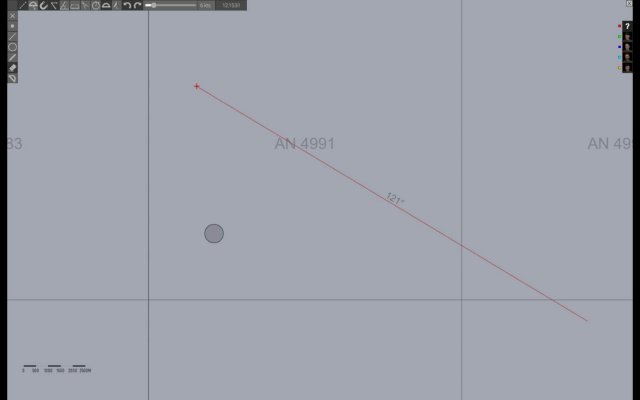


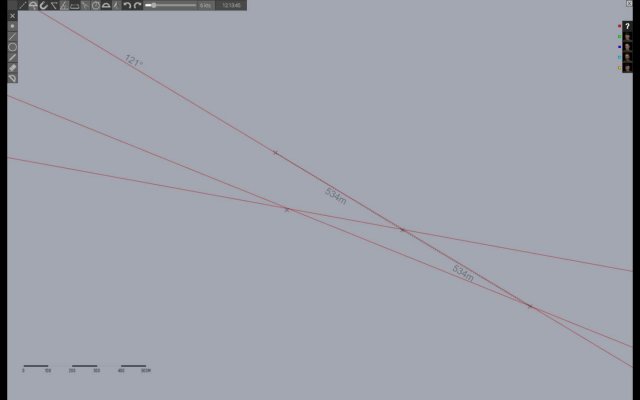
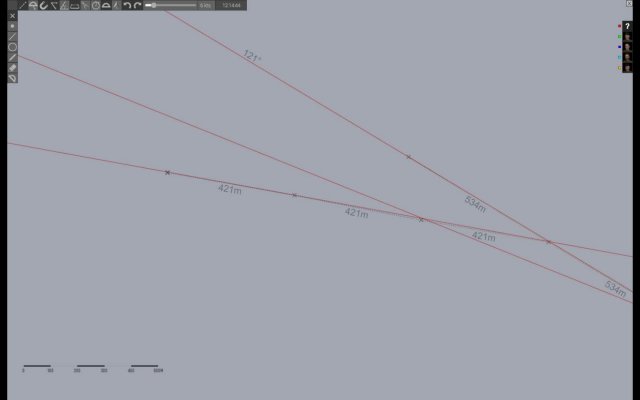
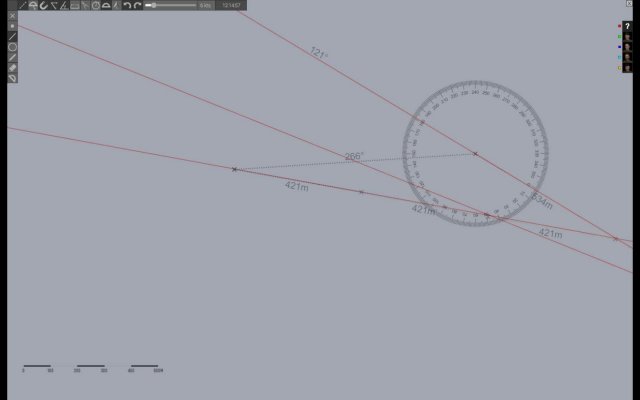
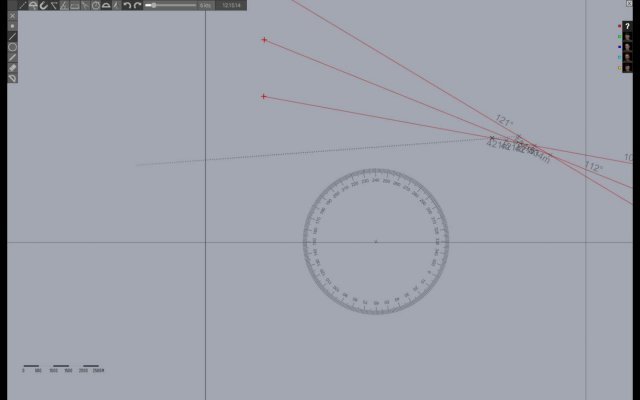

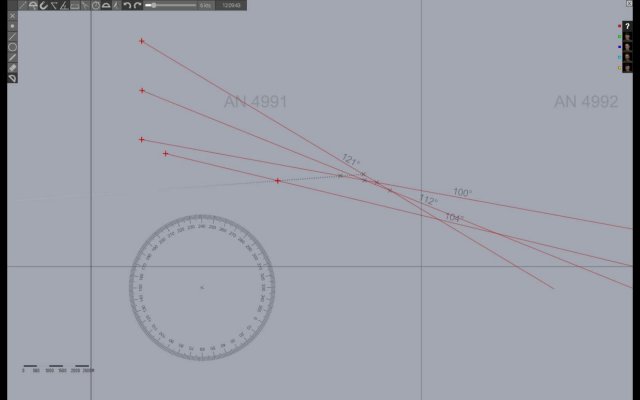
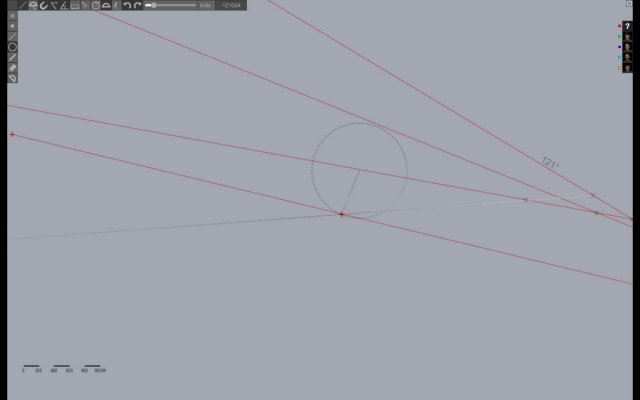
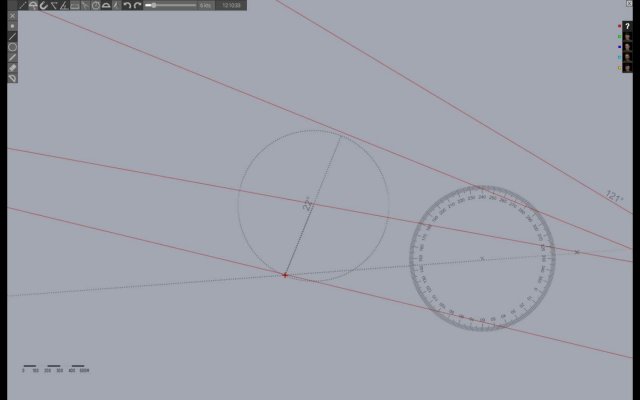
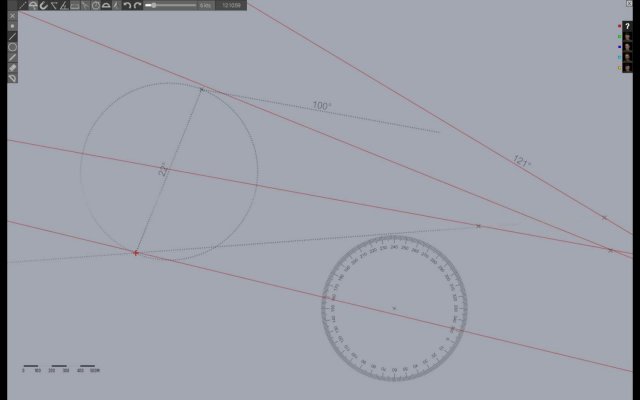
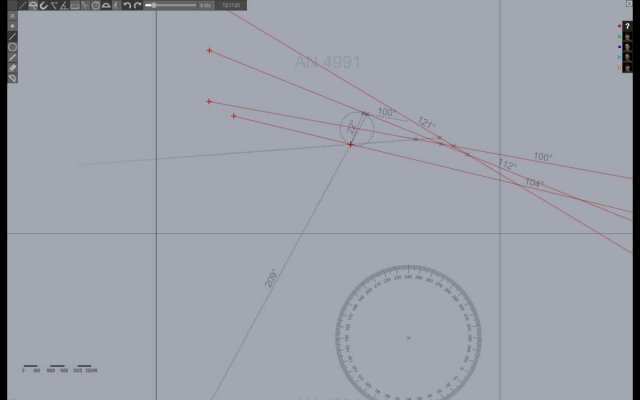

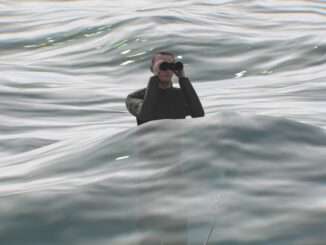
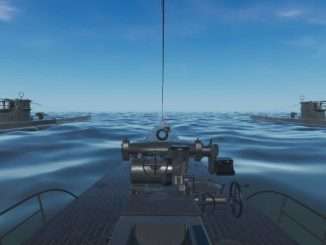
Be the first to comment